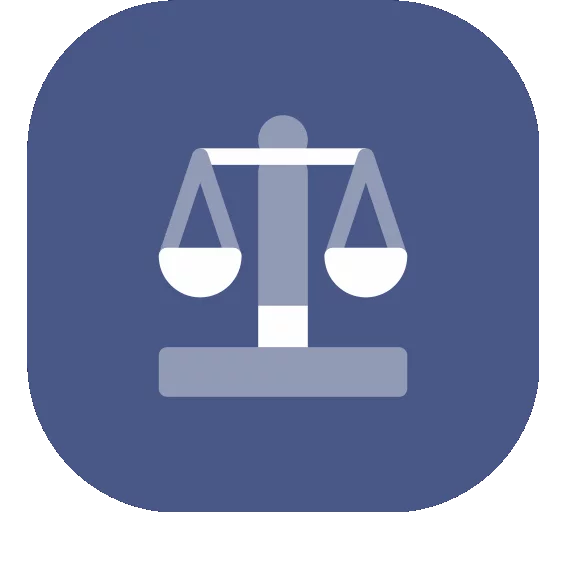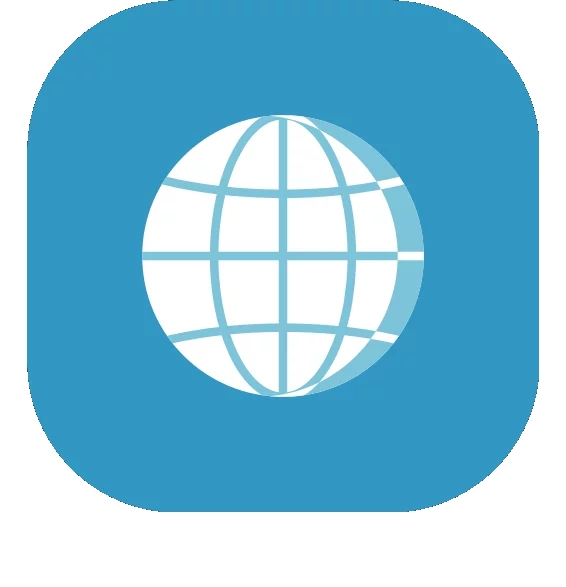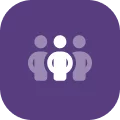SEO Terminology: Essential Terms and Concepts You Need to Know for Success
Exploring the digital marketing universe starts with understanding SEO terminology. Whether you’re optimizing a website for better rankings or creating content that connects with your audience, knowing […]
Exploring the digital marketing universe starts with understanding SEO terminology. Whether you’re optimizing a website for better rankings or creating content that connects with your audience, knowing the right terms is a must. Concepts like keywords, backlinks, and algorithms might seem technical, but they form the foundation of effective search engine optimization.
In this A to Z SEO glossary, we’ll explore the essential SEO terminologies and concepts you need to master. With these terms at your fingertips, you’ll be better equipped to improve your site’s visibility, drive more organic traffic, and build a strong online presence. Let’s get started!
Key Takeaways
- Proper use of SEO strategies boosts site visibility and user engagement
- Organic search results trump paid ones for sustainable long-term growth
- Effective SEO includes optimizing both content and technical website aspects
- High-quality backlinks are more valuable than a large number of low-quality ones
- Staying updated with search engine algorithms ensures ongoing SEO success
Core SEO Terminology: Grasping the Fundamentals

Understanding the core SEO terminology lays the groundwork for success in digital marketing. But don’t worry—we’ve got you covered with the fundamentals.
What’s SEO and Its Purpose
Search engine optimization, or SEO, is the process of optimizing your website and your content to improve its visibility—ranking—on a search engine results page (SERP). In other words, it serves as the compass by which content becomes discoverable online.
SEO involves studying various elements, from the search engine’s algorithm to user intention, so platforms like Google deem the content valuable and display it to users. When executed effectively, this enhanced visibility can elevate site traffic and user engagement organically, bypassing the need for paid promotion.
How Search Engines Interpret Content
Search engines use sophisticated algorithms to analyze and understand website content, determining how well it aligns with a user’s query. When a web browser requests a webpage, the search engine dispatches its crawling mechanisms to index the content found under a specific domain name.
Crawlers analyze everything from the URL structure to the relevance and placement of tags to categorize and prioritize content. After crawling, the content is stored in the search engine’s database, called the index, where it can be retrieved for search queries.
Understanding how search engines interpret and rank your content is critical for improving visibility and drawing targeted traffic to your site. The key is to ensure that every URL, tag, content, keyword, and even the domain name itself is optimized to communicate clearly with the algorithm.
Organic versus Paid Results
In the competitive landscape of internet search, a clear understanding of the difference between organic and paid results is essential for your SEO terminology comprehension. Organic results are those web pages that earn their spot on the search engine results page due to their relevance to the search query, quality of content, and successful SEO practices.
On the other hand, paid results appear at the top or side of a page, prominently displayed due to advertisers using platforms like Google Ads to bid on keywords—you’ll notice the word “sponsored” at the top. Unlike the sustainable growth achieved through SEO, paid results cease to exist once the advertising budget depletes.
Both organic and paid results are important in a digital marketing strategy. Organic results focus on long-term growth, while paid results offer immediate visibility and traffic. Combining both can effectively maximize your online presence.
Keywords and SEO
Keywords are one of the pillars of optimization and one of the most important concepts in SEO terminology. They are the words or phrases that users enter into search engines like Google to find specific information on the Internet.
An effective SEO strategy requires careful selection and integration of these terms into the content. This might include the alt attribute of images, captions, and other strategic locations to improve Google search relevance.
Additionally, when quality content that correctly utilizes these keywords earns a backlink from a reputable site, it signals to search engines that the content is authoritative and valuable, further enhancing its position in search results.
If you’re focusing on improving your SEO efforts, the following steps provide a blueprint for integrating keywords effectively:
- Conduct in-depth keyword research to uncover terms that are relevant to your target audience.
- Embed keywords in the HTML source code of your pages, including meta tags and alt attributes.
- Craft informative content that naturally incorporates these keywords to satisfy user queries and potential search intent.
- Seek opportunities to acquire legitimate backlinks, enhancing the perceived trustworthiness of your content.
Understanding Backlinks and Their Role
Backlinks, also known as inbound links, are hyperlinks from external websites that point back to your pages. They are vital to search engine ranking algorithms and act as votes of confidence. In addition, the value of a backlink is heightened when it comes from a site with established authority and relevance.
Websites with more high-quality backlinks are often seen as more authoritative and rank higher in SERPs. Crafting a successful link building strategy involves approaches like:
- Identifying potential link partners within one’s industry relevancy.
- Publishing content (guest posts) in reputable websites in your niche, with backlinks to your site where appropriate.
- Creating compelling, shareable content that naturally attracts hyperlinks.
- Reaching out to other site owners for link placement, stressing mutual benefits, and maintaining transparent communication.
On-Page SEO Terms: Optimizing Your Content
On-page SEO is another essential SEO terminology. It’s the practice of optimizing individual web pages to improve their rankings and earn more relevant traffic from search engines. Here are the most relevant concepts for you to know!
Meta Titles and Descriptions
As the name suggests, the meta title, or title tag, defines the title of a web page. Crafting effective meta titles is a critical component of on-page SEO that directly influences both search rankings and user engagement.
When constructed well, it succinctly informs both the content management system (CMS) and the potential visitor about the essence of the landing page. The meta title acts as an enticement for the target audience to click through from the search engine results page.
Utilizing keywords effectively ensures your content matches relevant queries and reader expectations. To ensure the title tag aligns with SEO best practices and addresses key user needs, consider the following elements:
- Use targeted keywords that connect with the interests and search behaviors of the intended audience.
- Maintain a concise length that is fully visible on search results, typically under 60 characters.
- Invoke clarity and relevancy, making it apparent what the page content is about from the title alone.
Meta descriptions are also important for enhancing a web page’s findability. They consist of a brief summary of the content. While they aren’t a direct ranking factor, meta descriptions influence click-through rates (CTR) by helping users determine whether the page is relevant to their search.
In general, aim to craft meta descriptions with 150-160 characters to ensure it doesn’t get cut off in search results. Also, include the focus keyword and write with a persuasive, engaging tone that encourages users to click.
Header Tags
Header tags, integral components of HTML markup language, play a crucial role in structuring content for both user experience and search engine optimization. Their use in organizing web content effectively signals the hierarchical importance of topics on a page.
Your H1 tag should describe the main topic of the page and include your primary keyword. H2 tags are for major sections of content, while H3-H6 are for smaller subsections. This hierarchical structure makes your content easy to navigate.
Image Alt Text
Alt text is an SEO terminology that sometimes goes unnoticed. It is a short description that you add to an image’s HTML tag.
When HTML elements such as images incorporate descriptive alt text, they provide context for users who might be unable to view them, such as those using screen readers. Moreover, the alt text gives search engines information about the image, allowing them to index it properly and show it in relevant image search results.
Content
Creating relevant, high-quality content is paramount for any successful SEO strategy. Search engines rely heavily on content to determine what a webpage is about. This means that the more comprehensive and in-depth your content is on a topic, the better search engines can assess its value.
This level of quality assurance extends beyond mere keyword inclusion, inviting a comprehensive approach that anticipates the audience’s inquiries and strives to address them clearly and insightfully.
For an effective content marketing strategy:
- Conduct Thorough Keyword Research: Identify the search terms your audience is using and incorporate them naturally into your content.
- Create High-Quality, Valuable Content: Make it informative and original while addressing the needs of your audience.
- Ensure It’s Well-Structured and Readable: Organize the headings, break large chunks of content, use bullet points, and more. This helps users scan and navigate the content easily.
Technical SEO Terminology: Boosting Site Performance

Technical SEO involves optimizing a website’s technical aspects to improve its rankings in search engine results. Want to learn more relevant SEO terminology and concepts? Check it out!
Impact of Site Speed on Rankings
Site speed is a critical factor in search engine rankings, as it affects not only the user experience but also engagement metrics that search engines, such as Google, take into account. A webpage that loads swiftly caters to the modern internet user’s expectations, improving metrics such as time on page and reducing bounce rates.
When a site responds quickly to a query string, it is more likely to be crawled thoroughly by an internet bot, enhancing its presence in local search results and providing a competitive edge in the digital landscape. To improve the speed, try compressing images and files, implementing a Content Delivery Network (CDN), and using caching to speed up page loading.
Mobile Optimization and Its Essentials
You must know that mobile optimization is an SEO terminology, right? More and more people access the internet through smartphones and tablets rather than desktop computers. In fact, over half of global web traffic comes from mobile devices,
However, mobile optimization requires more than responsive design. It encompasses a comprehensive strategy that includes a robust site map, efficient XML to guide crawlers effectively, and diligent keyword research to understand how users search on mobile devices.
By optimizing for mobile, a business meets the current standard for user experience and has the potential to improve its SEO metrics.
Navigating XML Sitemaps
In SEO terminology, an XML sitemap is a file that lists all the important pages on your website. It acts as a roadmap for search engines, laying out the organizational structure of a website’s content. This is essential for effective indexing in today’s complex search algorithms.
A well-crafted sitemap enables a precise marketing strategy to function smoothly, guiding search engine bots in understanding the relevance and hierarchy of pages. Moreover, XML sitemaps facilitate semantic search by ensuring content is categorized accurately, thereby improving search visibility and potentially increasing the return on investment (ROI) for website owners.
Role of Robots.txt in Crawling
The robots.txt file is an integral component of a website’s architecture, working as a directive for search engine crawlers. This computer program, residing at the root directory of a site, communicates with web crawlers to inform them which parts of the site should be indexed and which should be ignored.
Proper utilization of robots.txt is crucial for application software related to search engine optimization because it can help maintain a healthy bounce rate by preventing search engines from accessing irrelevant or duplicate content.
By adhering to white hat SEO practices, this simple text file can be a potent tool in guiding search engines effectively, thus enhancing a site’s overall visibility and performance.
Using Canonical Tags to Prevent Duplication
Also, in technical SEO terminology, a canonical tag is an HTML element used to tell search engines which version of a page is the “preferred” or “original” one. Why it matters? Duplicate content on a website occurs when two or more pages feature the same or very similar content.
When this happens, search engines may struggle to determine which version should rank in search results, reducing the visibility of all versions. By specifying a canonical version of a page, you can ensure that all inbound links count toward it.
Off-Page SEO Terms: Building Authority
At this point, you’re already more familiar with the SEO terminology, right? But we aren’t done. In addition to on-page SEO, there’s off-page SEO. It is essential in enhancing a website’s authority and involves strategies beyond site content and architecture.
While on-page SEO focuses on optimizing content and technical elements on your website, off-page SEO works on building the site’s reputation, authority, and trustworthiness on the internet. Here’s what you need to know.
Quality versus Quantity in Backlinks
As you saw above, backlinks are votes of confidence that you receive and search engines value. Still, in the sphere of off-page SEO, the focus on backlink quality rather than sheer quantity reaps greater benefits in terms of authority and ranking.
First of all, a single backlink from a respected, high-traffic site typically imparts more domain authority (DA) than numerous low-quality links. This can drive more targeted, relevant traffic to your site—people who are more likely to engage with your content and convert.
Focusing your link building strategy solely on the number of backlinks can lead to a reliance on spammy, irrelevant, or low-quality sites. On the other hand, a selective strategy fosters a credible link profile that search engines reward with higher rankings, enhancing overall site performance.
In addition, disavowing unwanted links is a critical tactic in maintaining a website’s health and authority in search engine rankings. The process employs web analytics to identify harmful backlinks that could be detrimental to a site’s SEO efforts, offering a mechanism to notify search engines to disregard them.
Exploring Domain Authority
Domain Authority is a metric that evaluates a website’s potential for ranking on search engine results pages. It essentially signifies the website’s trustworthiness in its niche. Developed by SEO software company Moz, this score ranges from 1 to 100, with a higher percentage indicating a greater likelihood of ranking.
Factors that influence DA are backlink profile, site structure, and content, among others. Despite that, it’s worth pointing out that domain authority isn’t a direct ranking factor used by Google. Nonetheless, it serves as an estimate of your site’s authority or trustworthiness.
Leveraging Social Signals for SEO
In SEO terminology, social signals refer to the activity, engagement, and interactions that a piece of content receives on social media platforms. Leveraging social signals is an increasingly important strategy in off-page SEO.
The interaction that users have with a brand can influence a website’s visibility and authority. Even though it is unclear if Google considers social signals when ranking, they are generally seen as indicators of content popularity and can contribute to your website’s visibility and reputation.
Listed below are actionable ways to engage and amplify social signals for SEO benefits:
- Implement social sharing buttons on the website to facilitate easy sharing of content.
- Create engaging, share-worthy content that resonates with the target audience, driving organic social interactions.
- Monitor social media analytics to understand the impact of social signals on web traffic and SEO performance.
Understanding Guest Blogging
Guest blogging is a strategic tool in off-page SEO that enhances a site’s authority by publishing content on other reputable platforms. By contributing to external blogs, you can tap into new audiences, gain backlinks, and boost your authority.
When executed with diligent research and an understanding of both the host site’s audience and SEO best practices, guest blogging can become a powerful avenue for organic growth and network expansion. The benefits include:
- Expanding reach by tapping into the established readership of the host blog.
- Improving backlink profile through strategic placement of links within quality content.
- Enhancing brand reputation and authority within a specific industry niche.
SEO Metrics and Analytics: Measuring Success

When you talk about SEO terminology, naturally, we have to discuss metrics and analytics. After all, they serve as the compass for gauging a website’s success in the search engine landscape.
While metrics are quantitative values, SEO analytics involves collecting, analyzing, and interpreting data related to a website’s performance in search engines.
Interpreting Click-Through Rates (CTR)
Click-through rates reflect the percentage of pageviews that result in a user clicking on a hyperlink. Generally, CTR serves as an indicator of the effectiveness of a title or description in search engine results.
A high CTR suggests that content is precisely tailored to the audience’s interests, strengthening your content marketing strategy. As spiders crawl the web, the combination of content relevancy, improved click-throughs, and strategic marketing can culminate in a significant increase in website traffic and engagement.
But how can it be improved? Good practices include writing engaging titles, optimizing meta descriptions, and conducting A/B testing.
Significance of Bounce Rate
The bounce rate reveals the percentage of visitors who leave a site after viewing only one page. A high rate may imply that web content doesn’t align with organic search results or that user experience and search engine marketing can be improved.
By examining visitor behavior, you can identify potential content issues or navigation pitfalls and address them to increase engagement and conversion. Here is how the significance of bounce rate unfolds:
- It indicates whether the web content meets the expectations set by organic search results.
- It offers insights into user behavior, signaling the need for adjustments in search engine marketing strategies.
- It acts as a gauge for the effectiveness of the site’s user experience, prompting necessary optimizations.
Tracking Conversion Metrics
In SEO terminology, conversion metrics indicate how well your website achieves its goals. Tracking them is essential for any business focused on enhancing its online reputation through effective content creation.
The process involves scrutinizing data from a website’s source code and analyzing how different elements, including the domain name system and any scripting language employed, influence visitor actions. Accurate tracking allows businesses to understand the value of their digital presence and quantify the success of engagement strategies.
Examples of conversion metrics include:
- Organic clicks.
- CTR.
- Engagement rate.
- Average session duration.
- Clicks on call-to-actions (CTAs).
Calculating Return on Investment (ROI)
ROI measures the profitability of your SEO efforts by comparing the revenue generated to the costs incurred. Calculating requires an analysis that extends beyond just the graphics on traffic heatmaps.
Strategies to improve return on investment include:
- Focus on Strategic Keywords: Target keywords that are likely to result in conversions or purchases.
- Track Revenue from SEO: Use tools like Google Analytics to attribute revenue to specific SEO campaigns or keywords.
- Monitor Cost Efficiency: Regularly evaluate your SEO budget and adjust based on performance.
- Invest in Content Marketing: High-quality, evergreen content continues to generate traffic and conversions over time, maximizing your ROI.
Essential Tools for SEO Analysis
In the vibrant sphere of SEO, essential analysis tools offer companies invaluable insight into website performance. Google Analytics tracks and analyzes website traffic, user behavior, and conversions. Google Search Console (GSC) provides insights into how Google crawls and indexes your website, keyword performance, and site errors.
There’s also Search Atlas, an advanced, all-in-one SEO platform designed to transform the process of content creation and optimization. From link building and content creation to technical SEO audits and on-page optimizations, Search Atlas equips you with all the necessary tools to improve your website’s performance effectively.
More Relevant SEO Concepts
SEO terminologies and actions go far beyond what you learned. Keep reading to understand more concepts.
E-A-T: Expertise, Authoritativeness, Trustworthiness
In the context of advanced SEO, E-A-T stands for Expertise, Authoritativeness, and Trustworthiness. These three factors are critical to a website’s credibility in the eyes of search engines:
- Expertise: Displays the creator’s knowledge and proficiency in a specific field or topic. To show it, include well-researched information and precise terminology.
- Authoritativeness: Recognizes the website or author as a respected and credible source in their industry.
- Trustworthiness: Reflects the credibility and reliability of a website and its content.
To excel in these areas, a site must offer more than just strings of keywords; rather, it should showcase authoritative knowledge. Understanding and implementing E-A-T within a website’s content strategy can significantly impact its search engine rankings and user trust.
Implementing Structured Data and Schema
Structured data is a standardized format for providing information about a page and classifying its content. It helps search engines understand the context and purpose of a webpage. Implementing structured data and Schema is a strategic advancement in SEO, enabling search engines to not just crawl, but comprehend and categorize the content semantically.
Through the integration of Schema markup, a website communicates its data more effectively to search engines, enhancing the accuracy of search results pages. Potentially, it also improves click-through rates.
Websites that embed structured data into their HTML code often gain a noticeable advantage in search engine result rankings and user experience by providing searchers with immediate, relevant information.
Optimizing for Voice Search
Optimizing for voice search is becoming indispensable in the digital age to secure increased web traffic and, consequently, revenue. Search engines are increasingly relying on machine learning and Natural Language Processing (NLP) to interpret the nuance of human speech, prompting businesses to refine their SEO strategies to cater to voice queries.
Voice search tends to be more conversational and specific, shifting the focus of SEO toward long-tail keywords and natural language. Ensuring content responds directly to the types of questions asked via voice assists in driving relevant traffic to a website.
Enhancing User Experience (UX)
In SEO terminology, the User Experience focuses on creating a seamless, intuitive experience that encourages users to stay longer, engage more, and ultimately achieve their goals on your site.
A well-designed UX invites visitors to subscribe to a newsletter, digest an informative infographic, understand the site’s policy, and engage with the community, taking into account the smallest parameter of user satisfaction.
Google’s algorithms increasingly prioritize sites with strong UX. Metrics like Core Web Vitals (loading performance, interactivity, and visual stability) directly influence rankings.
Utilizing Latent Semantic Indexing (LSI) Keywords
Latent Semantic Indexing is a method used by search engines to analyze the relationship between terms and concepts in content. Utilizing LSI keywords effectively streamlines the interface between user queries and the content they seek.
By incorporating terms related to the primary keywords without needlessly creating doorway pages, webmasters can structure their site’s subdomain to cater more precisely to user intent. This approach broadens the content’s reach while maintaining its specificity.
Common SEO Pitfalls: Terms to Watch
In the evolving landscape of SEO terminology, pitfalls abound that can incur costs, diminish consumer trust, and impact a site’s ranking. Below, you’ll find some of the most relevant terms, actions, and concepts.
Avoiding Keyword Stuffing
Keyword stuffing is the practice of overloading a webpage with excessive repetitions of a specific keyword or phrase to manipulate search engine rankings. While this tactic was effective in the early days of SEO, search engines have become much more sophisticated and now penalize websites that engage in keyword stuffing.
Instead, delivering valuable, topic-relevant content that subtly incorporates keywords enhances the site’s relevance and appeal, promoting a better user experience and higher rankings.
Identifying and Fixing Duplicate Content
For SEO efforts, the presence of duplicate content on a website can severely impact the success. It can confuse search engines and dilute page authority.
Once identified, implementing 301 redirects or specifying canonical URLs are practical solutions that resolve these issues, ensuring each page is unique and contributes to the SEO goals of the site.
Risks of Black Hat Techniques
Black hat SEO techniques are unethical or manipulative strategies used to boost a website’s search engine rankings in ways that violate search engine guidelines. The risks associated with these techniques can be detrimental to a business page’s integrity and performance.
Practices like cloaking, keyword stuffing, and using private link networks designed to manipulate search engine rankings may offer a temporary boost, but they can lead to harsh penalties from search engines.
Businesses aiming for longevity and a strong online presence should focus on ethical SEO marketing strategies (white hat) that ensure their business listings are found through organic SEO rather than trying to draw unwarranted attention through dubious methods.
Recovering From Penalties
Recovering from penalties incurred by search engines often starts with a meticulous audit to identify the missteps within a website. Once an issue is flagged, site owners can utilize tools like Google Search Console to address the problem, whether it’s through disavowing harmful backlinks or correcting content violations.
It is a concept steeped in patience and investment. Search engines gradually recognize actions taken to correct mistakes. It may take time to rebuild lost rankings and domain authority after a penalty, but consistent, ethical SEO efforts will eventually restore your position.
Elevate Your SEO Strategy
Understanding SEO terminology is foundational for navigating the complexities of digital marketing and enhancing online visibility. Familiarity with key concepts and definitions, from on-page elements to technical SEO, ensures that websites communicate effectively with search engines and users.
However, you might need more than just understanding to achieve the best results. That’s why trusting LinkGraph can elevate your SEO strategy. Book a meeting with our award-winning SEO experts.




















































































